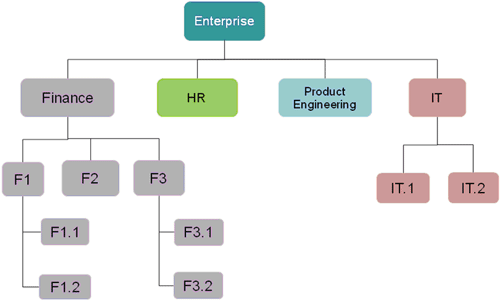Where We Were in 2009 and Where We’re Headed in 2010
Co-authored by Richard Larson
At the close of 2008 we made seven predictions about business analysis and project management trends for 2009. How did we do? This article looks back at our predictions for 2009 and forward to new ones for 2010.
1. 2009 Trend – Convergence of PM and BA Roles.
As the economy tightens, organizations will decrease their project budgets. But, they still need projects done, so look for organizations to try and combine the role of the BA and PM on projects. Project managers will be asked to do more requirements elicitation and analysis. Business analysts will be required to manage more projects. Oh, and by the way – you will need to do that in addition to your normal roles!
How’d we do? It appears that many organizations are, indeed, either merging the roles or completing feasibility studies on combining the roles. Here, also, is a sampling of the comments received in response to my December 2009 blog asking whether or not one person could fill both roles, I received:
-
Johnstde 95% of my projects require me to do the jobs of BA and PM.
-
Drusso The points made agree with trends we’re seeing with our clients and opportunities
-
gmmba, Truth be told. When I am evaluating resumes for BA opportunities, I look for BAs with solid Project Management experience. When I am evaluating Project Managers, I look for solid BA experienc
-
a gues I may be moving to a PM/BA type role and it is unnerving coming from a straight BA positio
-
Hkmartin Some people are skilled in both PM and BA work and can easily shift from one role to the other
-
abhikashyap22 ,My answer to your question will be a “Yes”. A person can perform a BA role and a PM role on the same project.
2010 Trends
Look for some companies to continue to question the separation of roles, while others recognize the importance of the business analyst and keeping it separate. Look for some attempt at role delineation (see 2010 trend summary at end) and how BAs, PMs, and testers can all work together effectively. Organizations will continue to expect business analysts to test requirements, although there will be a growing awareness that the testing process is different from business analysis.
2. 2009 Trend – Greater Emphasis on Requirements in Project Management.
The PMBOK® Guide Fourth Edition “Collect Requirements” contains a number of requirements elicitation techniques. They are a subset of the techniques described in the BABOK® Guide 2.0, so BAs also need to be familiar with these.
How’d we do? It appears that the topic of collecting requirements as part of project management is wide-spread. There have been numerous presentations, webinars, and articles on this topic. The term “Collect Requirements” has crept into our common project vernacular. There are many blogs and discussions about collecting requirements, including who should collect product requirements vs. project requirements, as well as what level of detail should be collected and when. This topic has helped fuel the debate about the role of the project manager and business analyst and who should be responsible for what.
2010 Trends
Organizations will continue to struggle with the role definition of the BA and PM and where the two overlap, such as who is responsible for defining the business problem and product scope. Look for organizations who value both roles to further define responsibilities. Also look for more business analysis Centers of Excellency (COEs) to tackle not just roles and responsibilities, but also requirements processes and templates that can be used during business analysis.
3. 2009 Trend – Change in Requirements Approaches.
We see a continued trend in business analysis techniques continuing into 2009. Here are some to consider:
-
Slightly less reliance on use cases and movement towards user stories and scenario-based requirements.
-
Less emphasis on requirements specifications, more emphasis on modeling, prototypes and diagrams.
-
More requirements management. There will be continued increase in business analysis and requirements planning in 2009. We see more and more organizations using traceability to control and mage product scope
How’d we do? We did pretty well on the first two and part of the third.
- User stories, along with the agile approach (see below) have been adopted in many organizations.
- While many organizations, particularly large companies, document requirements in a formal specification, others are opting for less formality on some projects. Also, many companies are using models to supplement textual requirements lists.
- We’re seeing an increase in the number of organizations that understand the importance of tracing requirements and understand the relationship between traceability and managing scope. In addition, many companies that have adopted Agile methods participate in release and iteration planning. However, in 2009 we anticipated more wide-spread adoption of other business analysis planning processes, such as creating a business analysis work breakdown structure (WBS) or estimating business analysis tasks.
2010 Trends
Organizations will move to documenting requirements appropriately for their projects. They will continue to recognize that one size does not fit all. Waterfall project teams will move to less documentation where it makes sense, understanding that over documenting can be as detrimental as not documenting enough. More organizations adopting Agile methods will understand when documentation is important (for contracts and regulatory compliance, for example) and not use Agile as an excuse for omitting all project discipline. Increasing adoption of requirements management tools will contribute to greater requirements management for organizations who employ them.
4. 2009 Trend – Increased Use of Agile Approach and Techniques.
Integrating Agile methods into project management and business analysis is a trend that will continue in 2009. Currently, the industry has a wide, varied, and inconsistent use of Agile techniques. This trend is likely to continue as organizations adopt Agile techniques and the industry adopts commonly accepted practices.
How’d we do? The adoption of Agile methods, especially Scrum but also including XP, exploded in 2009. The use of Agile is one of the hottest topics at both project management and business analysis conferences, in the blogosphere, and within PMOs and COEs. Scrum user groups continue to grow in numbers and numbers of attendees. The BABOK® Guide is developing an Agile extension.
2010 Trends.
We anticipate that the adoption of Agile methods will continue to increase. There will be more realization within organizations that using Agile methods is not an excuse for lack of discipline, that automated testing tools might be needed to achieve significant benefits, and that techniques such as facilitation and modeling are still important. More organizations will implement methods such as Scrum, and will continue to get positive feedback from both the team and the business clients.
5. 2009 Trend – BABOK® Continuing to Have an Impact.
The practice of business analysis is being positively influenced by the Business Analysis Body of Knowledge (BABOK®). The BABOK® Knowledge Areas of Enterprise Analysis are beginning to gel in organizations, as is the need to do requirements planning. We’re seeing more formality and standardization in the methods, say, of doing business cases, or using traceability to manage requirements.
How’d we do? The number of IIBA members and chapters continue to grow. There were 5,000 members at the end of 2007 and 11, 707 as of January 2010. The number of Certified Business Analysis Professionals (CBAP) continues to grow as well. There were 301 as of January 2008, 479 as of January 2009 and 827 as of January 2010 (IIBA Newsletters). There have been more comments by discussion group members and in articles and blogs that acknowledge the BABOK® Guide as the de facto business analysis standard. However, regretfully, we think that use of BABOK processes such as Enterprise Analysis or business analysis planning has not increased significantly.
2010 Trends
Both project management and business analysis will be recognized as essential to project success. The number of CBAPS will continue to grow worldwide as the tasks and techniques BABOK becomes more widely adopted. In 2010 there will be more of an effort to understand the role of the PM and BA (see above). The relationship between Enterprise Analysis in the BABOK and Portfolio Management in the PMBOK will be the subject of presentations, articles, and blogs. PMI and IIBA will collaborate to clarify the roles and handoffs between project managers and business analysts. This effort will improve the practices of both professions, although they will likely be subtle shifts.
6. 2009 Trend – Business Intelligence Continues to Grow.
This area of information systems has been growing steadily and 2009 promises to have no letup. As BI tools and techniques improve and solid benefits are realized, organizations will invest more and more in this tactic. Since BI relies heavily on tools such as Business Objects or Cognos, the underlying business requirements can be easily overlooked in favor of what the tools can produce.
How’d we do? The need for BI continues to grow, as well as the reliance on automated tools. The attention paid to BI requirements analysis has lagged, unfortunately.
2010 Trends
There will be a continued reliance on tools. Organizations will look to predictive analytics as a way to compete. There will be recognition that the BA is needed to elicit and analyze BI requirements. In his article “Building the Basics Is Key to Launching a Successful BI Program, (Sean: Please link”(http://www.businessintelligence.com/article.asp?id=166&pagenum=2), author: Gary Garris states “Striking the right balance between the type of information required and the framework for delivery requires a defined and methodical approach built on solid governance principles that merge business drivers with appropriate enabling technologies. Look for more articles and webinars on BI requirements in the months ahead.
7. 2009 Trend – “The Economy, Stupid,”
As a past political slogan said: A slumping economy tends to affect travel and training budgets, and this one is no exception. That translates into fewer trips to national conferences or travel to out-of-state training classes. Have you noticed the big increase in webinars as a way of exchanging information and interacting virtually without travelling? Watch for more of the same in 2009.
How’d we do? As the economy continued to slump, the number of webinars increased dramatically. Many national and regional conferences had fewer attendees than the previous year. BAs and PMs have found new ways to get and share information through social media and virtual discussion groups.
2010 Trends
“Discretionary” budgets will continue to be tight. Travel funds for conferences will not increase significantly. Webinars will continue to be a quick, inexpensive way to increase knowledge and obtain credits for recertification. In addition to the continued growth of social media, both virtual and online training will increase as many organizations’ training budgets remain static or decrease.
Other 2010 trends include opposing forces in these areas:
- Roles. Look for both more role delineation (PM and BA, BA and tester, for example) as well as less role delineation as Agile team members wear multiple hats.
- Governance. Look for more governance on some types of projects, such as BI and less governance on those using Agile methods. Look for a move towards more standardization of requirements processes and templates (established in growing numbers of Centers of Excellence), and less with Agile projects. More business process management and more formal and informal process modeling as a way to uncover the gaps in what an organization currently does and what needs to be done as a result of implementing a new product or software.
- Tools. There will be both a greater reliance on tools (such as Agile testing tools) and more adoption of low-tech tools, such as low-tech prototypes.
Don’t forget to leave your comments below
Elizabeth Larson, PMP, CBAP and Richard Larson, PMP, CBAP are Co-Principals of Watermark Learning (www.watermarklearning.com), a globally recognized business analysis and project management training company. With over 30 years of industry experience each, they have used their expertise to help thousands of BA and PM practitioners develop new skills. Both Elizabeth and Richard are among the world’s first Certified Business Analysis Professionals (CBAP) through the International Institute of Business Analysis (IIBA) and are contributors to the IIBA Business Analysis Body of Knowledge (BABOK). They are also certified Project Management Professionals (PMP) and are contributors to the section on collecting requirements in the 4th edition of the Project Management Body of Knowledge (PMBOK).

 Now that you are recognized as a senior business analyst, what can you look forward to in your professional future?
Now that you are recognized as a senior business analyst, what can you look forward to in your professional future?

 In our profession there is often talk about business analysts needing to get out of the detail and take a look at the bigger picture to make sure your efforts are still heading towards the goal of the project and the company goals. I refer to the syndrome of never getting out of the details as being “in the weeds.” In theory, looking at the big picture every now and then makes perfect sense. I have been asked by BAs how do you do it and when is a good time. I thought I would give an example of how I try to build-in project milestones where I force myself to pull back the weeds and take a look to make sure I am heading down the right path. Now, on agile projects this should be built in to the process. Before beginning a new sprint, the team should be looking at the big picture and determining the right path. The example below addresses how I did this on a recent project using more of a traditional approach.
In our profession there is often talk about business analysts needing to get out of the detail and take a look at the bigger picture to make sure your efforts are still heading towards the goal of the project and the company goals. I refer to the syndrome of never getting out of the details as being “in the weeds.” In theory, looking at the big picture every now and then makes perfect sense. I have been asked by BAs how do you do it and when is a good time. I thought I would give an example of how I try to build-in project milestones where I force myself to pull back the weeds and take a look to make sure I am heading down the right path. Now, on agile projects this should be built in to the process. Before beginning a new sprint, the team should be looking at the big picture and determining the right path. The example below addresses how I did this on a recent project using more of a traditional approach.